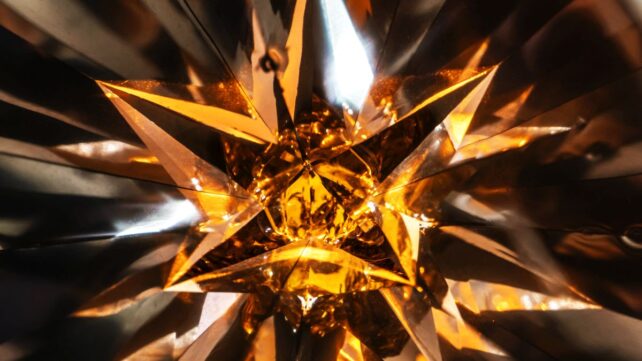A time crystal that beats to the rhythm of both order and chaos has revealed a new way in which matter can keep time.
New experiments have demonstrated the time rondeau crystal – a time crystal that repeats in time but never quite in the same way. The result is chaos in the short-term, but on longer timescales, order emerges.
"In this work, we reveal the existence of new types of temporal order, arising from non-periodic but structured drives," writes a team of physicists led by Leo Joon Il Moon of the University of California, Berkeley, and Paul Schindler of the Max Planck Institute for the Physics of Complex Systems in Germany.
"Our experiments show that breaking the periodicity of the drive can lead to new exotic forms of partial temporal order."
Related: This Weird New Phase of Matter Seems to Occupy 2 Time Dimensions
Time crystals, first predicted by US theoretical physicist Frank Wilczek in 2012 before being observed for the first time in 2016, bring additional complexity to the patterned atomic matrix that makes up regular solids.
Crystalline materials like diamond, quartz, and salt consist of three-dimensional atomic lattices, in which the arrangement of their atoms repeats. Any section of the lattice placed over another will match up, but only if superimposed perfectly.

A time crystal describes particles moving through sequences that aren't dictated by the timing of any external push, breaking the expected flow. The particles oscillate within their lowest energy states with a timing pattern that repeats; that pattern can also be perfectly superimposed, like the spatial arrangement of atoms in a crystal.
A time quasicrystal is one in which the oscillations of the atoms are structured, but do not repeat, like a Penrose tiling – a pattern in dimensional space that never quite repeats, yet still follows a set of rules.
According to Moon and his colleagues, a time rondeau crystal is yet another version, exhibiting both order and disorder, repeating and not repeating, like the musical form known as a rondeau.
"A pattern comprising a repeating theme (here stroboscopic order) that alternates with a contrasting variation theme (here short-time temporal disorder) is known in classical music as a rondeau," the researchers write.
"Perhaps one of the more famous examples of a rondeau in music is Mozart's Rondo alla Turca (Turkish March); hence, we refer to this type of temporal order as a rondeau order."

The researchers created their time crystal by exploiting atomic-scale voids, or vacancies, in a diamond. These vacancies are lattice sites where an atom should sit, but nothing is there. This is known as a nitrogen-vacancy center, with a nitrogen atom sitting next to an empty space.
Using lasers to excite the nitrogen-vacancy centers, the researchers hyperpolarized the nuclear spins of carbon-13 in the diamond. A programmable arbitrary waveform generator then drove the spins through precisely timed sequences of pulses ranging from periodic to random.
The team carefully monitored hundreds of so-called drive cycles, or laser pulses, finding that sometimes the time crystals oscillated for more than 4 seconds before decaying.
In those few seconds, however, the researchers observed that, even though disorder existed within each drive cycle, the overall state of the time crystal repeated itself at the start of each cycle. When examined just once per drive cycle, the system demonstrated perfect order, much as a perfectly timed strobing light may capture a repeat pattern in a series of images on a spinning wheel.
Then, the researchers took their experiment to the next level. To illustrate controllability, the team even encoded text – "Experimental observation of a time rondeau crystal. Temporal Disorder in Spatiotemporal Order" – directly into the timing of the pulses, using the ASCII standard.
There's no practical use for this, at least not yet; but it does tease some possibilities for the future.
"Our experiments," the researchers write, "open a promising new avenue to investigate temporal order, demonstrating the long-lived stable coexistence of long-range temporal order and micromotion disorder at short timescales."
The research has been published in Nature Physics.

